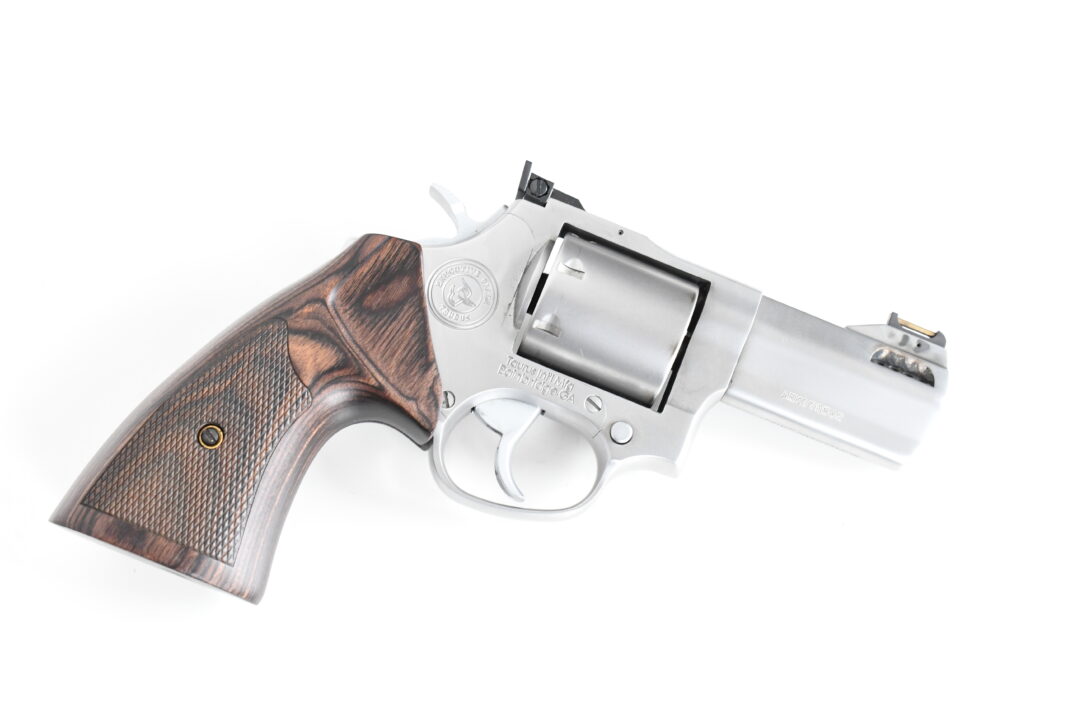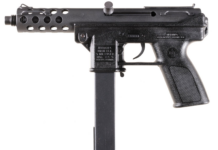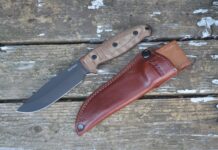This year, Taurus showcased the latest member of its premium Executive Grade product line: the new Taurus 692 Executive Grade revolver. This large framed double action .357 Magnum revolver is part of Taurus’ Tracker revolver family. The Tracker family consists of revolvers built around larger frames and barrels that vary between 2.5 and 6.5 inches in length.
Tracker revolvers are available in a wide spectrum of calibers, such as rimfire rounds like .22 WMR, .22 LR, and .17 HMR, and larger centerfire revolver cartridges like .357 Magnum and .44 Magnum. This also indirectly includes cartridges like .38 Special and .44 Special, which are also compatible with .357 Magnum and .44 Magnum revolvers, respectively.
Tracker revolvers that are specifically chambered for .357 Magnum and .38 Special also come with an additional fitted cylinder that’s reamed out for 9mm Luger. So, customers end up taking home a three-in-one revolver.
Taurus 692 Executive Grade Overview
692 Executive Grade Frame And Stocks
The Taurus 692 Executive Grade is a seven-shot double action revolver with a three-inch ported barrel that includes two cylinders, chambered for .357 Magnum and 9mm Luger. Both of these cylinders are unfluted and match the frame’s satin stainless steel finish.
Besides the satin finish, many of the Taurus 692 Executive Grade’s accents are in line with the rest of the Taurus Executive Grade series. These include the unique Taurus Executive Grade hologram found on the sideplate, a brass front sight, and wide, fan-shaped Altamont hardwood stocks.
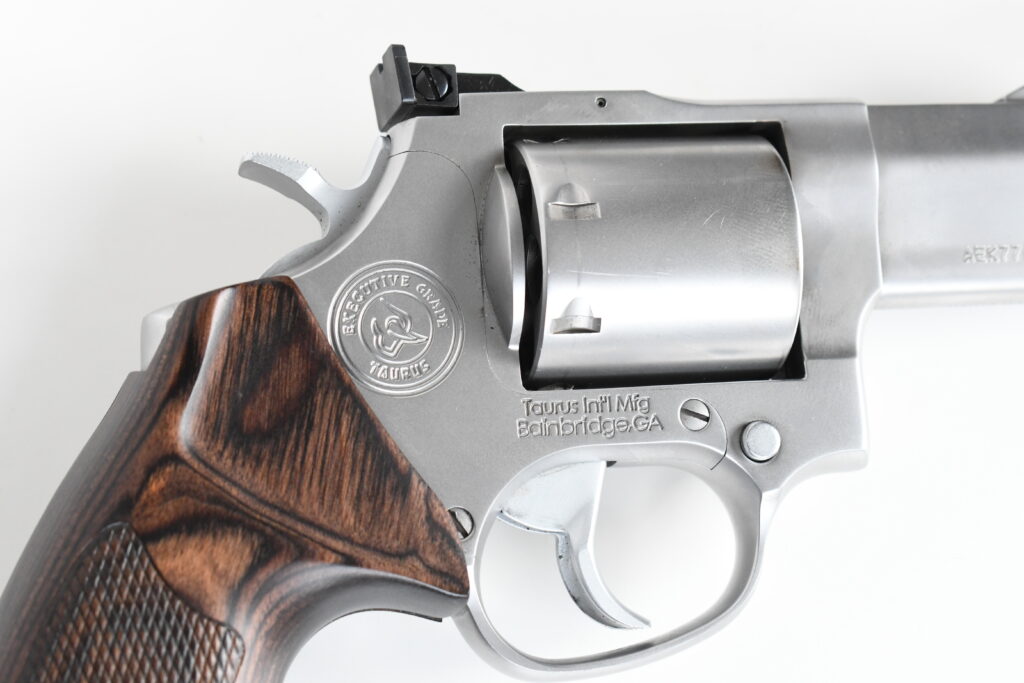
A Familiar Frame
My frame of reference vis-a-vis revolvers is best informed by my experience experience with classic Smith & Wesson revolvers. So, I couldn’t help but notice that the frame of the Taurus 692 Executive grade closely resembles the classic Smith & Wesson L-Frame.
I’d be lying if I didn’t admit that the 692 was very reminiscent of Smith’s classic 686 models. To clarify, 692s are not S&W 686 clones. But they’re categorically similar in that their frames and cylinders are of similar dimensions, and they shoot the .357 Magnum cartridge. Given the historical influence of Smith & Wesson in Brazil during the 20th century, the trained eye can detect similarities between the S&W and Taurus double-action schemes with each respective gun’s sideplates removed.
The cylinders spin in the same counterclockwise direction, and the cylinder release latches both actuate forward to unlock cylinders. The modern Taurus revolver action found across its products is best described as a simplified approach to the original double-action mechanism first codified by Smith & Wesson over one century ago.
By no means am I implying anything negative by referring to the Taurus lockwork as simplified; these revolvers have proven to work reliably and efficiently across the board in my experience with several different models. An apt comparison would be contrasting the original Colt AR-15 layout and action to nearly every modern gas-actuated rifle that followed it. The Colt AR-15 is the firearm that started the trend and set the patterns for everything else moving forward.
In the revolver world, I’d argue that the Smith & Wesson double action scheme did the same for many modern revolver lineages. Furthermore, there’s no doubt that S&W’s global pervasiveness during the 20th century was also a factor overseas as much as it was in the United States.
The 692 Executive’s Grip Frame
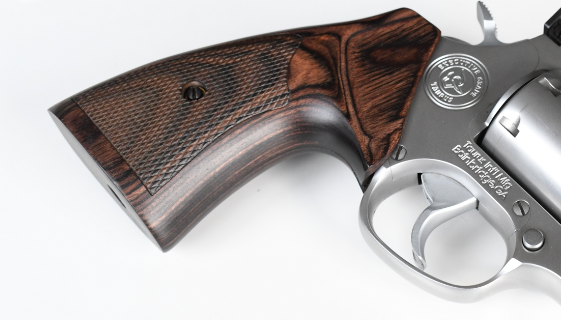
Removing the stocks of the 692 Executive reveals a grip frame very different from that found on any Smith & Wesson K or L-Frame revolver. Taurus Tracker grip frames are smaller and more rounded to the point where having either a square or round butt is irrelevant. Likewise, the hammer spring is a more modern coil spring instead of the old-fashioned leaf spring and strain screw combination found on Smiths.
The Taurus 692 EXG’s smaller and more generalized grip frame allows for a wider variety of grips and stocks to fit. The included hardwood Altamont stocks with the Taurus 692 Executive Grade have light diamond checkering on both the right and left sides, while the frontstraps and backstraps are smooth.
The fitment of the stocks is excellent, without any visible gaps. Even the seams where both sides join are nearly invisible (and parallel with the grain of the hardwood). The bottom portion of these stocks fans out and has a profile akin to many of the wooden stocks found on both vintage Smith and Colt revolvers. I think they most closely resemble the classic Colt Python’s stocks.
Sights & Barrel

The Taurus 692 Executive Grade is fitted with a solid one-piece three-inch barrel. This unit includes a faster (and arguably more modern) 1:10 barrel twist and eight port holes (four on either side) right behind the muzzle and angled upward at approximately two and eleven o’clock. The muzzle also has a recessed crown that’s set back approximately ⅛ inch deep.
On the breech side, the forcing cone matches the diameter of the charge holes, which is helpful when handling full-size magnum rounds, especially over time. The 692 EXG’s ejector rod nestles and hides in a cutout milled into the one-piece barrel. While this barrel technically does not have a true underlug by virtue of its shape, it does fit that profile, and the rod is shrouded and protected from the outside world.
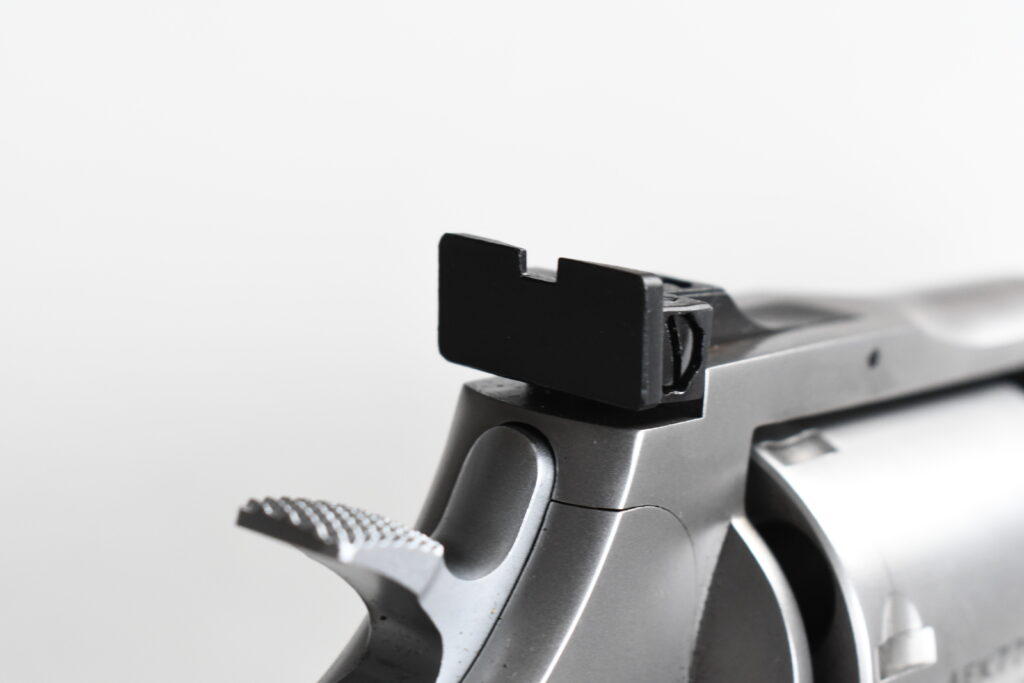
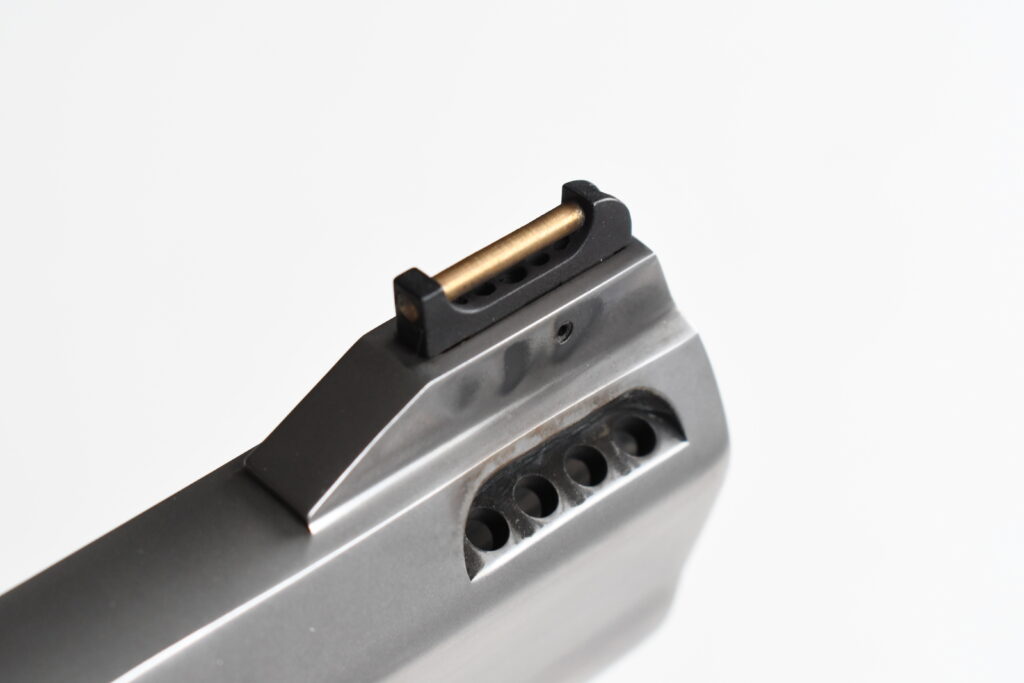
The front sight, which sits on a pedestal, has a captured brass rod in a configuration that mostly resembles a fiber optic front sight. This is a unique touch that’s found on some of the other Executive Grade Models, such as The Judge EXG and the 605 EXG. In tandem with its multi-caliber role, the rear sight found on 692 EXGs is fully adjustable for windage and elevation, as having fixed sights on a multi-caliber handgun would render it less practical.
The rear sight’s face is plain, smooth, and black with a square notch. In good lighting, the end-piece of the brass rod will catch light and clearly contrast against the black of the rear sight.

